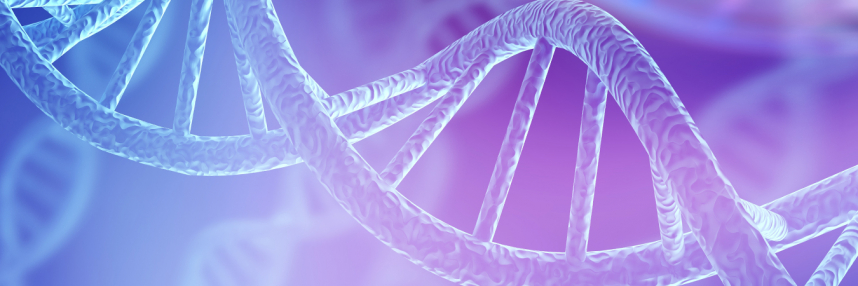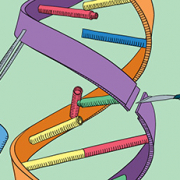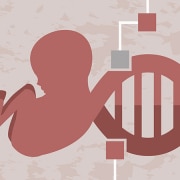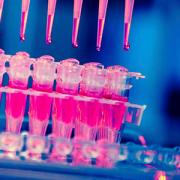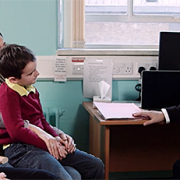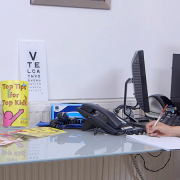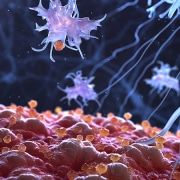Motor neurone disease: Could gene therapies be the answer?
New clinical studies hope to use genomics to improve treatment of and even find a cure for motor neurone disease
Clinical trial results recently published in the New England Journal of Medicine and Nature Medicine have shown promising evidence that two types of gene therapy – antisense therapy and stem cell gene therapy – have the potential to slow and, in some cases, reverse the progression of motor neurone disease (MND).
What is motor neurone disease, and what role do our genes play?
Also known as amyotrophic lateral sclerosis, MND is a neurodegenerative condition in which specialist nerve cells in the brain and spinal cord called motor neurones stop working properly, leading to loss of muscle control and, eventually, difficulty moving and breathing. It is incurable and treatment options are currently limited.
Around 5,000 people in the UK are affected by MND at any given time. Of this number, around 20% carry a harmful variant in one of the 30 genes that are known to cause, or increase a person’s risk of developing, MND.
One such gene is SOD1, responsible for 12%–20% of cases in which there is a family history of MND, and around 2% of cases in which there is not. Over 200 different mutations in SOD1 have been identified as associated with MND because they produce faulty proteins that clump together and damage motor neurones.
Antisense therapy
The international study published in the New England Journal of Medicine, which was partially run by the University of Sheffield Institute for Translational Neuroscience, focused on an antisense oligonucleotide drug called Tofersen (also known as BIIB067), which has been developed specifically to treat familial MND caused by mutations in the SOD1 gene. Antisense is a type of RNA therapy, and in this case it works by reducing the amount of SOD1 proteins manufactured by cells.
During clinical trial, 108 MND patients with SOD1 mutations had Tofersen administered by monthly lumbar puncture. Within weeks, levels of SOD1 proteins in their cerebrospinal fluid were reduced, as well as levels of neurofilament light chains (NfLs), which are released when neurones are damaged and die. Over the course of a year, the treatment was found to stabilise – and in some cases even reverse – disease progression in patients with slower-progressing MND, and to slow deterioration in those in whom the disease was progressing more rapidly.
Stem cell gene therapy
The study published in Nature Medicine, which was run by Cedars-Sinai, was built around a stem cell gene therapy that has recently passed its first safety evaluation and, researchers argue, has the potential to help a wider group of MND patients.
The therapy involves introducing stem cells that have been genetically engineered to produce glial cell line-derived neurotrophic factor (GDNF), a protein that promotes the survival of motor neurones, into the spinal cords of 18 MND patients.
“Using stem cells is a powerful way to deliver important proteins to the brain or spinal cord that can’t otherwise get through the blood-brain barrier,” said Cedars-Sinai Professor of Biomedical Sciences Dr Clive Svendsen, who co-authored the study.
The results of the clinical trial showed that, one year after the treatment, none of the patients had experienced negative side-effects; in addition, nearly three years after that single treatment, those engineered stem cells were still delivering GDNF to the patients’ spinal cords. Crucially, the trial has shown that this type of treatment is safe for humans.
Unlike the antisense study, this approach is not confined to MND caused by a specific mutation; for that reason, if found to be effective, it could be used to help patients whose MND has a different genetic cause, as well as those in whom no genetic cause is known.
Researchers hope to continue their investigations with further clinical trials in the near future. Discussing the results, Cedars-Sinai Spine Center co-medical director Dr J. Patrick Johnson said, “Proving that we have cells that can survive a long time and are safe in the patient is a key part in moving forward with this experimental treatment.”
The antisense study has resulted in Tofersen being made available across the UK as part of an early access programme for MND patients with the SOD1 mutation. Researchers hope that, in future, patients with SOD1 mutations can receive regular testing for NfL levels, allowing them to begin therapy before they begin to display symptoms of MND.
–


